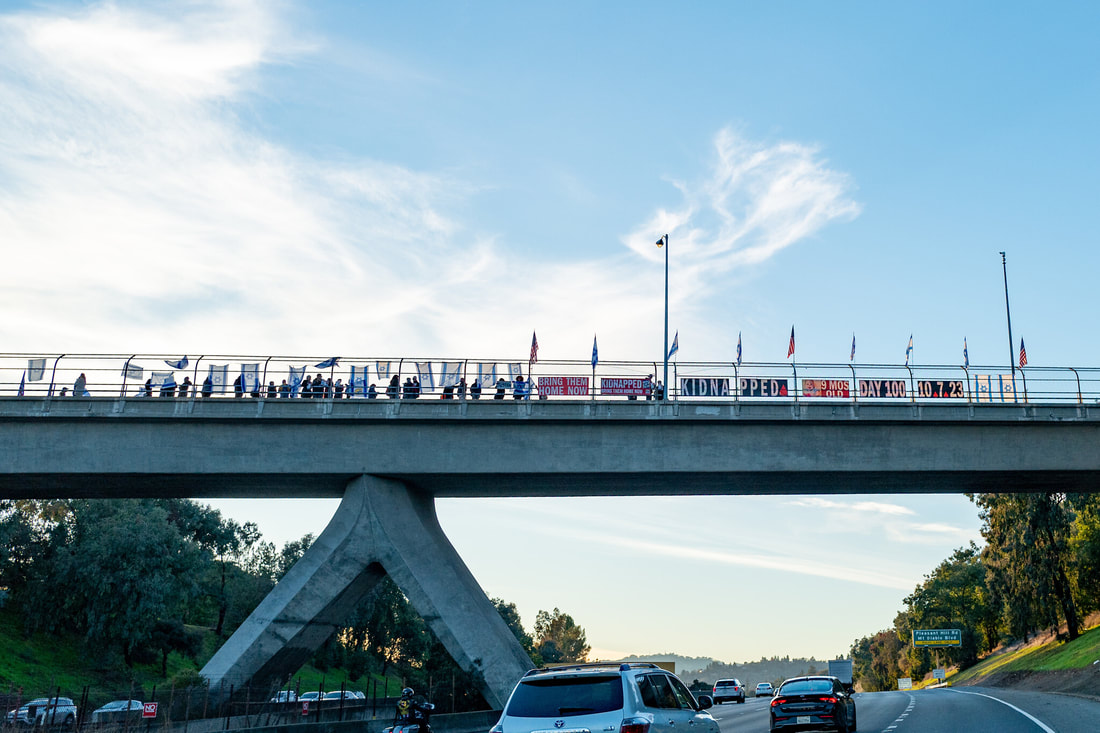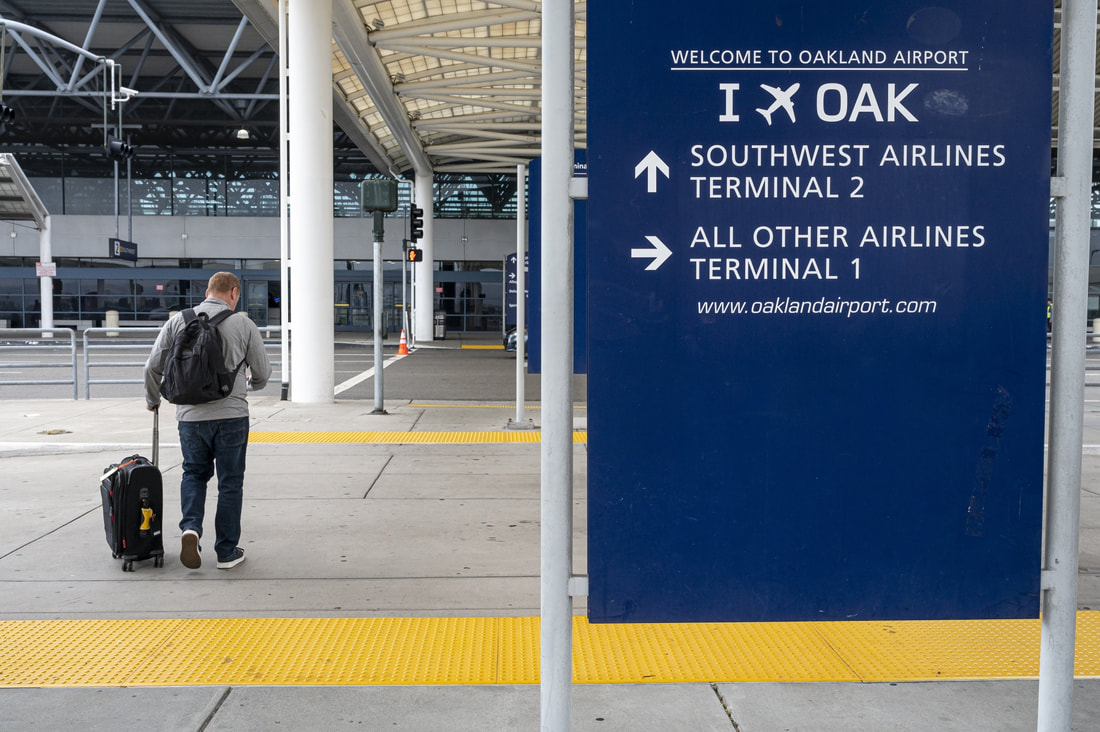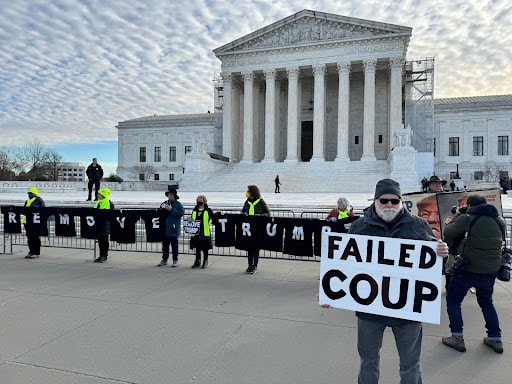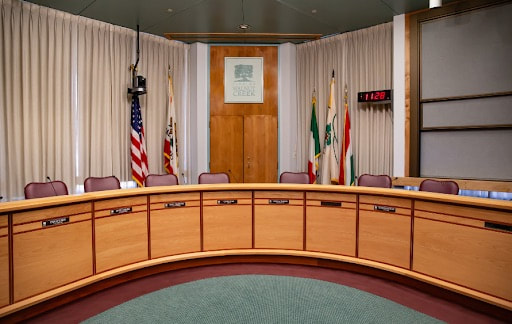|
Boeing suffers renewed scrutiny after industry investigations. Image c/o John Keeble/Getty Images By Anthony Romero News Reporter The year 2024 has proven to be a rough year for the Boeing Company, following several harrowing reports involving its planes that have sparked renewed concerns for public safety. The first week of 2024 saw a Boeing 737 Max 9 passenger jet lose a rear door plug midflight, with the broken piece landing in a high school teacher’s backyard in Portland, Oregon. The resulting incident led to the flight and its 171 passengers and six crew members having to make an emergency landing at the Portland International Airport. In response, the Federal Aviation Authority ordered the grounding and inspection of 171 Boeing aircraft from the first accident on January 5th to the 26th after the FAA cleared the 737 Max 9 models to fly again after having undergone a rigorous inspection and maintenance process. Despite the Boeing model returning to flights, the company is barred from expanding its production and is capped at 38 planes per month until these quality issues are fully addressed. A subsequent report from the US National Transportation Safety Board found that four bolts meant to secure the door to the plane were not fitted
A six-week audit in March discovered further complications with Boeing’s manufacturing line, including tests undergone with Spirit Airlines planes that identified five problems with the door plug. A separate failed audit involved a cargo door and another brought up installation concerns over cockpit windows. During an expert review panel, the FAA reported a disconnect between Boeing's senior management and other employees on matters of safety culture. Amidst heightened public scrutiny and legal pressure, Boeing CEO Dave Calhoun is set to step down from his position by the end of the year, following similar announcements from head of production Stan Deal and board chair Larry Kellner to exit their roles. As a result of this quality crisis, the Boeing Company has reported a loss of $355 million in the first three months of this year. Production has remained way below the cap set by the FAA, and the organization has demanded Boeing produce a plan to improve manufacturing by the end of May. The January 5th accident has seemingly halted Boeing’s public perception recovery 5 years after the two fatal crashes of Max aircraft in 2018 and 2019. Despite this, Calhoun reports that he is confident the company can recover, even as Boeing suffers a one-third dip in its stock. In addition to slowdowns in production and a limited manufacturing schedule, the Boeing Company has had to pay $443 million to airlines due to the 737 Max 9 groundings and the growing frustrations concerning delays in airplane orders. Several former managers have also stepped forward to cite multiple manufacturing issues with Boeing’s 737 and 787 liners, culminating in Boeing eventually having to deny the claims from a whistleblower that implied the company took shortcuts in developing the frames of the 787 Dreamliner model. In light of several massive developments, Boeing remains a central manufacturer of large passenger planes- maintaining its duopoly with Airbus. Analyst Richard Aboulafia does not see Boeing losing this position despite its setbacks: “Even if they are No. 2 and have major issues, they are still in a very strong market and an industry that has very high barriers to entry,” he says. In the meantime, the Bay Area has also had its fair share of difficulties with Boeing aircraft. On March 28th, a United Airlines flight departing from SFO to Paris was forced to land in Denver due to issues with one of its engines. The Boeing 777-200 arrived at the Denver International Airport where all 273 passengers and 12 crew members deplaned unharmed. This particular incident is only the latest of a slew of technical mishaps: on March 18th, a United flight to Japan had to return to its gate at SFO due to an engine start failure, while on March 15th a Boeing 737-800 plane arrived at the Rouge Valley International Medford Airport in Oregan with a missing external panel. Another notable incident occurred on March 7th, when a flight departing to Osaka, Japan lost its tire while taking off. The tire landed in the SFO employee parking lot and damaged several cars; there were no injuries reported on the ground, and the plane itself was safely diverted to LAX. Eyewitness Gary Glass was able to describe the moment the tire landed in the parking lot: “At the speed and velocity that it was coming down, it would have crushed somebody like a grape," said Glass, “I look up and it's a tire spinning at a rapid speed. It bounced in the staff parking lot and it bounced onto a car, a small compact car and I thought that it was going to crush that car and stay there but it actually bounced again really high, and tires still spinning and then landed on a red Tesla and completely totaled and crushed the red Tesla.” Aviation experts state that the missing tire is quite rare and is a singular maintenance problem that is not indicative of a larger manufacturing issue.
0 Comments
New developments in Concord’s five-phase urban development plan. Image c/o Google Satellite By Anthony Romero News Reporter The City of Concord has finalized a partnership with Brookfield Properties after accepting a term sheet for developing a naval weapons station. Plans for the former military base include the construction of a sustainable community space with unique offerings for housing, diversified job opportunities, and open recreational areas for hopeful residents in the East Bay. This particular five-phase deal with Brookfield is set to start development over a period of 40 years and will engage union organizers and emphasize community benefits. The 4,972-acre area will include 12,200 homes and 880 acres of dedicated green space; the developers intend to allocate 25% of the planned housing projects to designated affordable rates adjusted to the East Bay area. "I like the idea that our good friends at Brookfield are sticking their neck into the business (of affordable housing)," stated Concord Mayor Edi Birsan. "I think that's great." The majority of housing will be centered near Highway 4 and its commercial district at the western end will be close to the North Concord BART Station. Improvements to current infrastructure will also be considered, such as widening Willow Pass Road.
The Concord City Council’s negotiation agreement with Brookfield will give the real estate company 48 months to discuss the plan with the US Navy, who as of now still owns the land but has already selected the City of Concord as the primary reuse authority for future developments. Brookfield has brokered exclusive partnerships with the Contra Costa Building and Construction Trades Council and the Nor Cal Carpenters Union to handle construction for the project. Over its construction period, Brookfield has agreed to dedicate $100 million to build local sports parks, $65 million towards a community center and library, and reserve 55 acres for schools. Half of the area will encompass a 2,543-acre park, which will preserve habitats for endangered plants and wildlife. The overall goal for the area is to provide a solution to the expensive housing market in the Bay Area while also reducing the suburban climate impact. “There’s an emphasis on lowering greenhouse gas emissions and making it a transit-oriented development that is pedestrian and bicycle-friendly with higher densities around the train station,” says Guy Bjerke, Concord’s director of economic development and base reuse. As a developer, Brookfield is set to receive $6 billion. Image c/o Thomas Smith/Bay Area Telegraph By Matthew Colvin News Reporter In March of 2021, controversy arose over a group of pro-Trump supporters demonstrating on the El Curtola overpass over CA Highway 24 in Lafayette. They were protesting the 2020 election results by hanging flags and banners over the side of the overpass to be seen by passing drivers. The group posted up on the overpass weekly for several months, ultimately prompting enough complaints from Lafayette residents that a city council meeting was held to address the issue. In the end, Caltrans and the CHP were ordered to enforce state highway regulations that prohibit hanging banners or signs on the edges of overpasses, dispersing the demonstrations. Defending the council decision, Lafayette mayor Susan Candell stated, “While the city of Lafayette recognizes and respects the First Amendment rights of all protesters, we are increasingly concerned about the safety of motorists on the highway.”
While the situation was seemingly resolved at the time, three years later demonstrations at the El Curtola overpass have become relevant once again. In the wake of recent events in Palestine and Israel, pro-Israeli supporters have begun demonstrating on the overpass, hanging flags and banners in much the same manner as the pro-Trump group had done years prior. At first, the city of Lafayette seemingly ignored the new protesters, but in the late night aftermath of one of their demonstrations, pro-Palestine supporters graffiti-ed the overpass in response. This event brought the overpass back into the local community’s eye, leading to another city council discussion concerning the bridge and the ongoing protests being held on it. Residents expressed concerns that protests and demonstrations would only increase in frequency as the year progressed due to the upcoming presidential election, but no decision was made concerning CHP or police action. The decision, or lack thereof, certainly raises questions concerning the inconsistency of the city of Lafayette’s enforcement of highway regulations, with pro-Trump demonstrations being shut down, while pro-Israel protests have thus far been allowed to continue without police interference. As one city council member, Carl Anduri opined, “Nobody should be out there with flags, banners, marching, or protests.” Image C/O Bloomberg / David Paul Morris By Andrew Martinez Cabrera Associate Editor On April 11, the Port of Oakland’s Board of Commissioners voted unanimously to rename their operating airport, the Metropolitan Oakland International Airport (OAK), to “San Francisco Bay Oakland International Airport.” The following day, the Alameda County Board of Supervisors unanimously supported the name change. The success of the vote follows a March 29 announcement of the inevitable rename, in the hopes of “boosting geographical awareness” of OAK’s airport location.
In their April 12 press release, Executive Director for the Port of Oakland, Danny Wan, explained that due to the lack of name recognition for OAK and the need to increase the economic wealth of the East Bay, the new rebrand will allow for “[easier travel] for thousands of people and help grow the local economy.” In the same April 12 press release, the Port of Oakland listed local businesses’ support for the renaming, many of which reside in Oakland, in addition to the visiting bureaus for Visit Berkeley, Visit Walnut Creek, and Visit Tri-Valley. Support for the rebrand exceeds the Bay Area, as big airliners such as Southwest Airlines, Spirit Airlines, and Volaris have also vocalized their endorsement for the name change. These airliners hold large shares in OAK. For example, Southwest had the highest carrier share at 82.26% in a Feb. 2023 - Jan. 2024 window, estimated at 8,580 passengers, according to the Bureau of Transportation Statistics. However, on April 18, the City of San Francisco filed a federal trademark infringement lawsuit against Oakland. The lawsuit was filed by San Francisco’s City Attorney, David Chiu. Their cited complaints against the defendant (Oakland) include “Trademark Infringement (Lanham Act, 15 U.S.C. § 1114)[,] (2) Unfair Competition/False Designation of Origin (Lanham Act, 15 U.S.C. § 1125(a)) [and] (3) Common Law Trademark Infringement[.]” Just as the Port of Oakland owns its OAK title, the city of San Francisco owns the federal trademark name of “San Francisco International Airport” or SFO. In addition to alleged trademark infringement, Chiu also alleges in the lawsuit that Oakland’s intention of using ‘San Francisco’ in its rename will “almost certainly cause confusion among consumers and the public generally,” internationally or domestically. Also opposing the change include airliners such as United Airlines, whose carrier shares at SFO are 43.34%. In response, the Port of Oakland has denied any sort of infringement due to the renaming of its airport. Port of Oakland’s attorney Mary Richardson told CNN that “San Francisco’s lawsuit is disappointing… We will vigorously defend our right to claim our spot on the San Francisco Bay. We are standing up for Oakland and our East Bay community.” Image c/o writer/Pocket Gamer By Matthew Colvin News Reporter In early March, a House of Representatives committee unanimously voted to pass a bill that would force Chinese company ByteDance to either sell off TikTok within approximately five months, or face the app’s total ban within the United States’ borders. Despite ByteDance CEO Shou Chew testifying last year that the app poses no threat to Americans, legislators still moved to ban the app out of fear that it was allowing the Chinese government to spy on US citizens. As Washington Republican Rep. Cathy McMorris Rodgers said, “Today, we will take the first step in creating long-overdue laws to protect Americans from the threat posed by apps…”
However, it seems that Congress’ moral panic over mobile applications has not stopped there. On Sunday a House panel announced a sweeping bill that, if passed, would ban numerous apps and change the face of the App Store for good. While the bill is comprehensive, here’s a quick rundown on some of the biggest apps you may see vanish from the App Store soon if the bill passes, and why: UberEats is one of the first apps listed in the bill to be banned completely. While the service has had its fair share of controversy in the past, including allegations of monopolistic behavior and an antitrust lawsuit in 2022, Congress’ reasons for banning the app seem quite different; UberEats’ drivers never manage to deliver to the Senate Building in under forty-five minutes. As stated in the bill, Senator Ted Cruz (R-TX) “just isn’t him when he’s hungry” and the app’s sub-par performance “is no longer acceptable.” Tinder is being struck down, too; while speaking in favor of the bill, House Representative and former Speaker Nancy Pelosi (D-CA) said, “I have had many good friends try to use [Tinder], and the app is inexcusable. These very, very good friends are unable to find matches, and the app and its users are just very discriminatory in who they choose to match with.” Continuing to speak on behalf of her unidentified ‘good friends,’ Pelosi finished, “Discriminating against 84 year-old married women from Baltimore who accidentally swipe left when they mean to swipe right is intolerable in the land of the free. That’s what my friends say.” She received a standing ovation. Service and social apps are not the only ones that will be feeling the heat of this bill, however; even mobile games may not be safe. Subway Surfers is one of the biggest and most controversial app names listed in the bill’s ban list. According to the bill, Senator Mitch McConnell (R-KY) has been caught playing the game during numerous Senate sessions in recent months, and has had to have had his phone temporarily confiscated every time. Unfortunately, according to the bill, McConnell enters “grumpy mode” upon losing phone privileges and refuses to speak on any matters until he has received “an apple juice and a piece of string cheese.” As stated in the bill, this has “utterly derailed multiple sessions of the Senate, and must be curtailed immediately by a ban of the app to get him back on track.” The banning of Subway Surfers has proven controversial, though, as it seems Senator McConnell is not the only one with a strong connection to the game. Democratic opponents to the bill have claimed that President Joe Biden is unable to stay awake at Cabinet meetings unless pre-recorded Subway Surfers gameplay is being projected in the background, and that a ban of the app will interfere in his presidential duties and campaign for reelection. Should the bill pass, his supporters worry that they will need to find new means of “enrichment” for Biden if his 2024 presidential bid is to succeed. The Biden administration did not respond to our request for comment. Donald Trump is restored to the Colorado ballot in an unprecedented case. Image c/o Chase Woodruff/Colorado Newsline By Anthony Romero News Reporter On March 4th, the Supreme Court ruled that states may not disqualify former President Donald Trump from running in the upcoming presidential election. The judgment was announced before the Super Tuesday primaries and ultimately rejected challenges made by legislative officials in Colorado, Maine, Illinois, and other states that sought to remove Trump from their presidential primary ballots. The Colorado Supreme Court came to its decision by citing Section 3 of the 14th Amendment, which explicitly disqualifies government officials from running for public office after engaging in insurrectionist behavior. Colorado’s justices purported that Trump’s attempts to overturn the results of the 2020 presidential election resulted in the January 6th riots on the Nation’s Capital, making him ineligible to run for president. “We do not reach these conclusions lightly,” wrote the Colorado Court’s majority. “We are mindful of the magnitude and weight of the questions now before us. We are likewise mindful of our solemn duty to apply the law, without fear or favor, and without being swayed by public reaction to the decisions that the law mandates we reach.”
Section 3 of the 14th Amendment traces its origins back to the post-Civil War Reconstruction Era, acting as a legislative effort to address former Confederates who held office. A criminal conviction in this context is not necessary to enforce the provision, and Congress has historically refused to seat members under this clause. In the March 4th decision, all nine justices were in agreement, and the unsigned majority opinion of the court cited that this constitutional power resides with Congress instead of the states. Although states may use Section 3 to address dubious candidates running for state office, they do not have the same authority to enforce this law against candidates for national office. If states were allowed to disqualify federal government officials, an increase in disagreements regarding the eligibility of prospective leaders would threaten the stability of the relationship between the federal government and the people of the United States. Despite all justices reaching the same conclusion, there were some distinctions in their written statements, none directly addressing Trump’s actions as outright insurrection. Five of the Conservative justices (Chief Justice John Roberts and Justices Clarence Thomas, Samuel Alito, Neil Gorsuch, and Brett Kavanaugh) completely agreed with the majority opinion that Section 3 does not qualify states with the power to remove a federal official or candidate. In addition, they also concurred that Congress would need to develop legislation that creates an “enforcement mechanism” to enact the terms of the Fourteenth Amendment. This call for additional Congressional legislation was opposed by the three liberal justices (Justices Sonia Sotomayor, Elena Kagan, and Ketanji Brown Jackson) as they saw the Court’s legal jurisprudence as excessive and would only serve to shut the door on other potential methods of enforcement. The three Justices agreed with the majority opinion that Section 3 is reserved for Congress, but they urged the Court to practice judicial restraint when proposing to make decisions on matters that extend beyond this specific case. Justice Amy Coney Barrett made a distinctive stance by separating herself from both factions in her concurring opinion. Justice Coney Barrett agreed with the liberal Justices’ claim that the Colorado Supreme Court’s majority opinion overreached in suggesting additional federal legislation to enforce the disqualification provision. However, she questioned the liberal Justices’ tone and suggested that her fellow Justices not amplify their disagreement with the majority opinion. Justice Barrett stated the significance of the Court’s decision on this controversial issue, emphasizing that the unanimous agreement should serve to quell tensions in the nation, not to incur further polarization. “For present purposes,” she wrote in her opinion, “our differences are far less important than our unanimity: All nine justices agree on the outcome of this case. That is the message Americans should take home.” Check out the women-led class happening today in the Recreation Center at 5:00pm! By Jenevieve Monroe News Editor In honor of International Women’s Day and the Recreation Center’s women-led classes, here are some accomplished Gaels that began their athletic career at Saint Mary’s. Valerie Fleming Image c/o Michael Maloney, SF Gate Olympic silver medalist in women’s bobsled, class of 03’ Growing up in Foster City, California, Fleming has always had a home in the Bay Area. She grew up playing a variety of sports, spending her youth dreaming of becoming an Olympic athlete. During her college undergraduate years, Fleming took up javelin at the University of California at Santa Barbara and placed as the women’s champion of the Big West Conference. Fleming then sought her master’s degree in Health, Physical Education, and Recreation at Saint Mary’s College of California. In February of 2006, she went to compete in women’s bobsledding at Italy’s Olympic Winter Games and came home with a silver medal. Louella Tomlinson Image c/o Harry Cabluck, ESPN WNBL champion, Hungarian league champion, class of 11’ As the daughter of a triple-Olympian father and a double world champion mother, Tomlinson knew at a very young age that basketball would be her passion. After graduating from high school in Melbourne, Australia, she attended Saint Mary’s College of California to receive her bachelor’s degree in kinesiology while also serving as a student athlete for the women’s basketball team. Tomlinson left her mark internationally; by the time she graduated, Tomlinson had set an NCAA record with 156 blocks as a freshman. She returned to Australia as a center for the Dandenong Rangers, leading them to victory in the 2011 to 2012 WNBL championship. For the following season of 2013 to 2014, Tomlinson moved to Hungary to play for the Hungarian club PINKK-Pécsi 424 and also led them to championship. In honor of these amazing Gaels, make sure to go check out the Recreation Center’s “Intro to Rock Climbing with Chloe” at 5:00pm (walk-ins welcome)! Image c/o Chloe Ourada
Image c/o Joe Raedle/Getty Images By Matthew Colvin News Reporter Measles, the viral infection once thought to have been largely eliminated from the United States, has returned in force, with 35 cases having been reported from within 15 states as of February 22. With numbers increasing exponentially in the United Kingdom and other parts of the world and new cases popping up weekly within American borders, experts are becoming increasingly concerned about an outright outbreak.
Prior to the first measles vaccine being distributed in 1963, nearly all children in the US caught measles by age five, and three to four million Americans were infected a year; the average domestic death rate was four to five hundred. The infection usually begins with an intense fever, sometimes as high as 105° F, before developing symptoms of a cough, pink eye, and runny nose. Two to three days after that, the most recognizable indicator of measles manifests; a red, spotty rash that starts at the head and spreads its way all over the body. The disease usually runs its course in about ten days. No effective treatment exists, only the preventative vaccine, and while that vaccine has an incredible efficacy rate, that means very little if a majority of the population doesn’t get it. Unfortunately, that is the exact situation that epidemiologists are faced with worldwide. Measles vaccination rates have been in a constant state of decline since the beginning of the COVID-19 pandemic, and are yet to show any sign of increasing again. With everybody indoors, no measles being spread, and all the focus on a different virus, measles vaccination rates began to lower in 2019, and infection rates shot up not long after. The increase has been exponential; according to the World Health Organization, its European region alone saw an increase from about a thousand cases to over 30,000 in the last year. This increase is “unfortunately, not unexpected given the declining vaccination rates we’ve seen in the past few years,” according to John Vertefeuille of the CDC. Measles is commonly referred to as the ‘inequity virus,’ due to the fact that infection rates have always trended higher in poorer countries, simply because those countries don’t have ready access to the vaccine in the same way that first-world nations do. As such, the general status quo has been that measles has always been exterminated from nations such as the United States and the United Kingdom, but even that has been changing in 2024. England seemed to be the first major inflection point; despite having a long-time status of having eliminated measles, 166 cases popped up from January to February 15 alone, twenty of which were in London. Experts have attributed it to abnormally low vaccination rates for children in the past few years, and while the outbreak has caused a handful more parents to get their children vaccinated, “there are still hundreds of thousands of children who remain unprotected, and therefore remain at risk of serious complications or lifelong disability,” said Dr. Vanessa Saliba of the UK Health Security Agency. The United States seems to be catching on to that unfortunate trend, too. While the nation’s total measles infection count was 58 for all of last year, the US is already on track to surpass that with 35 reported cases; and it’s only the end of February. The biggest outbreak so far is in Florida, with eight cases centralized in that state alone, mostly at Manatee Bay Elementary School, near Fort Lauderdale. With Florida’s Surgeon General not locking the school or area down, the state has come under fire for giving the virus a prime chance to spread. Given that unvaccinated people have a 90% chance of being infected if exposed, the decision to leave Manatee Bay Elementary and the surrounding area open has been labeled by many as risky at best; even a small handful of unvaccinated children could catch and spread the virus to a much larger population. According to Dr. David Kimberlin, an expert of pediatric infection diseases at the University of Alabama, these cases are “not going to stay contained just to that one school, not when a virus is this infectious.” While the United States no longer has any endemic variant of measles, these cases appear to be coming from international travel, and spreading to unvaccinated individuals within the States’ borders. While measles usually clears up in seven to 10 days, it can induce complications such as pneumonia and seizures, and in severe cases, can cause death. Former President Barred From Conducting Business in NY Image c/o Maansi Srivastava/Pool, Reuters By Edith Cuevas News Reporter A New York judge found former President Trump liable for inflating his net worth to secure better insurance and tax rates, according to the Washington Post. Trump has been ordered to pay a penalty of $355 million plus interest, pushing the total penalty to $450 million, according to the New York Times. This decision by Justice Arthur F. Engoron comes after a yearlong battlewhich was put forth by New York’s attorney general. Along with the fine, Trump has also been barred from conducting any business in the state for the next three years. While he remains the owner of his businesses, he no longer controls the business decisions.
His sons Donald Trump Jr. and Eric Trump, have also been barred from conducting business in New York, and they have both been ordered to pay $4 million in fines for falsifying business records. These penalties will undoubtedly cause serious strain to the Trump Organization, and to Trump himself. The former president has 30 days to pay the penalty or secure a bond. Trump must post a bond that covers the full amount in penalties and interest before he is able to appeal this decision by Judge Engoron, according to the Washington Post. As severe as this penalty was, it was the precursor to the criminal trial that is set to begin March 25th. If Trump is convicted, he may be sentenced to up to four years in prison. It is important to note that the presidential candidate would not be able to pardon himself if he were re-elected. Image c/o City of Walnut Creek By Edith Cuevas News Reporter A Walnut Creek City council meeting was hijacked on Tuesday by a white supremacist wearing a “white power” t-shirt. His man identified himself as “Scottie” and delivered a two-minute speech full of hateful and antisemitic rhetoric, going as far as ending his speech with a Nazi salute.
The man expressed that his speech was necessary to speak up about the new restrictions on public comments during zoom meetings of the city council. Scotty expressed that his “first amendment right was being restricted by Jews” directly referring to the only Jewish member of the city council, Kevin Wilk. Directly pointing at Councilmember Wilk, Scotty said “I’m here today because of people like you think we’re scared to show up and show our face and call you out in person, and I dare you to shut me down.” The man immediately left the room after his speech, leaving the Council and attendees shocked in silence. Councilmember Wilk was the first to break the silence, “Mayor [Loella Haskew], I would just like to say something now that public comment has ended, that we live in a free country and there is free speech, and that means that we have to listen to awful and heinous comments like we just listened to,” said Wilk. “And I would like to apologize on behalf of the City Council and anybody that had to hear that horrible, horrible speech.” Mayor Pro Tem Cindy Darling stepped in and added “And we want to apologize to you, Kevin, because we know this is clearly so directed at you and so vile and not who we are as a city.” Councilmember Wilk also expressed, “I’m not going to cower from this. I’m going to stand up for people in the community. For every one of my voice, there’s a thousand people out there that wish… that are feeling that they don’t have a voice.” Walnut Creek police have informed the public that the FBI is aware of this individual and will coordinate with the council to keep all future meetings safe. |
StaffMadison Sciba '24, Archives
November 2023
Categories |













 RSS Feed
RSS Feed